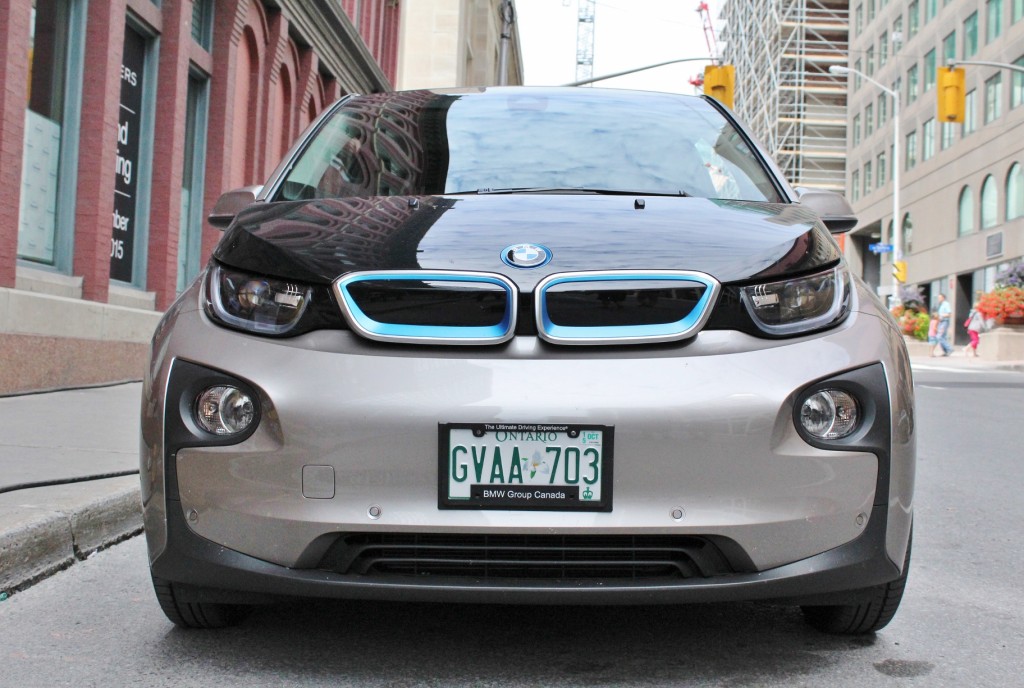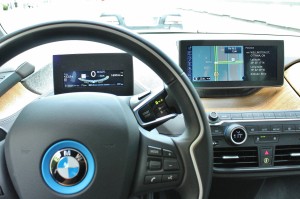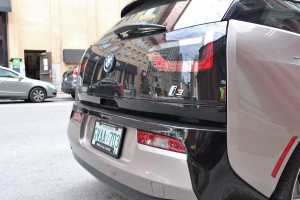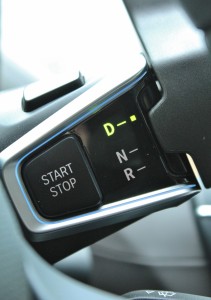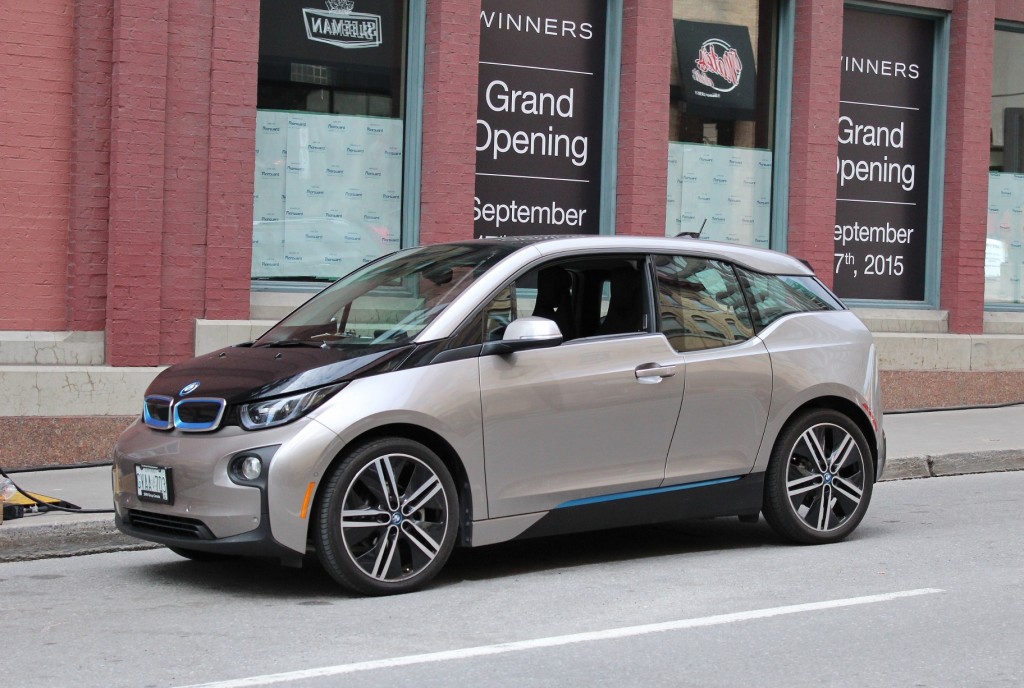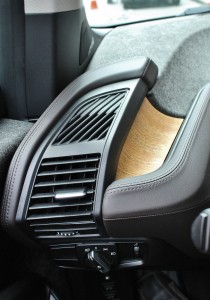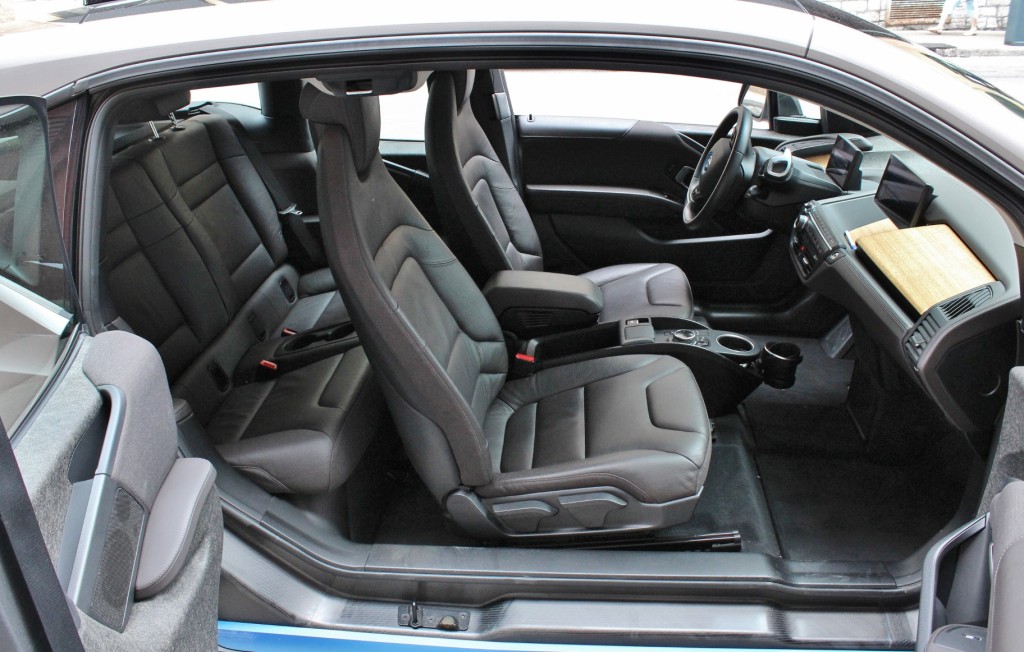Light, peppy extended-range EV has innovation in spades
Despite plenty of hype to the contrary, the automotive world is a lot more ‘evolution’ than ‘revolution’, and there’s nothing wrong with that.
The jump from Model T to Tesla Model S wasn’t achieved in a single bound.
In the electric vehicle world, the latest step forward is the quirky BMW i3 – a space efficient hatch that offers drivers an all-EV lifestyle or a range-extended experience. It began trickling into North American driveways as a pure EV last summer, with the more versatile range-extended model introduced this year.
The i3 isn’t going to be mistaken for anything else on the road. Short and tall, the four-seat EV features clamshell doors (with a dropped-down rear window), a glazed rear fascia, a spartan-but-high-tech interior, and extensive use of carbon fiber.
The dash, positioned low for visibility with two display screens rising from it, is topped with untreated eucalyptus wood and ringed (in this model) with dark brown leather – mixing classic luxury cues with the ultramodern.
While most EVs keep their interiors pretty conventional, BMW ventured way outside the box with the interior of this box.
Powering the i3 is an electric motor making 170 horsepower and 184 foot-pounds of torque, drawing from a battery with an EPA-certified range of 130 km. The manufacturer gives a range of 130-160 km, depending on driving style and terrain.
A range-extended option exists for the i3, which, for a few thousand dollars more, adds a 647cc two-cylinder generator and tiny 7.2-litre gas tank, pushing the vehicle’s range to approximately 240 km.
The first thing a driver notices upon entering the cabin is a lack of full (to the firewall) console, as well as the lack of obvious shifter.
A small, between-the-seats console exists to accommodate the infotainment dial, armrest and electric parking brake, but a driver and passenger could play footsies with all that open floor space.
Protruding from the right of the steering column is a small, fob-like shifter actuated via a toggle on the end. In what first seems like an awkward placing, the pushbutton ignition and ‘park’ button is also located on this abbreviated stalk.
In the back, rear seat passengers will be faced with a slightly upright seatback but ample leg and headroom.
The 6’4″ writer of this post could pass his hand between his scalp and the headliner while sitting on the flat but comfortable leather-bound bench seat.
Occupants of the i3 will quickly notice the surfaces not covered by leather or wood.
Looking like plain fiberglass, the interior boats widespread use of light and strong carbon fiber-reinforced plastic.
Not only does it contribute to the car’s stiff bodyshell, it allows the i3 to shed the weight that other EVs seem to pile on.
Starting at a curb weight of 2,635 pounds (barely more than the company’s Z4 roadster), the i3 weighs hundreds of pounds less than most modern compact cars, not to mention their heavier EV and hybrid brethren.
Driving impressions
That light weight and stiff structure lends to impressive acceleration and cornering.
BMW states the i3 will go 0-to-60 mph (0 – 96 km/h) in 7.2 seconds, which is quite quick. Electric motors carry with them two distinct benefits: instant torque and seamless acceleration from a typical one-speed automatic transmission.
The i3 leaps ahead when the stiff accelerator pedal is pushed, and decelerates rapidly when released, thanks to heavy regenerative braking.
In fact, so heavy is the engine braking effect that the brake pedal gets little use when the car isn’t at rest.
The i3 rides atop distinctive 155/70 R19 tires. They’re tall, but they’re also skinny.
The duration of this test was disappointingly brief, so highway handling characteristics and range details couldn’t be fleshed out.
Would the BMW wander or feel skittish on the highway? What about high-speed wind and road noise? Buffeting? These useful observations will have to wait until a longer road test.
Starting at $44,950 (before applicable government incentives) for the base EV model, the i3 with range extender will likely be the most popular model going forward.
After all, the ability to gas up in certain situations turns what would be a pleasant commuter vehicle into something capable of longer, out-of-town weekend jaunts.
It’s hard to beat the piece of mind that comes with knowing that once one fuel runs out, another will take over to help get you home.
Vehicles like the BMW i3 are still niche products, but improvements are occurring all the time in this field.
While pricier than plug-ins and EVs from Ford, GM, Nissan, Mitsubishi and Smart, the i3 takes the less-travelled middle road – slotting itself between the Tesla Model S at the top of the range, and those battling for the bottom.
Remember, this is still a BMW.
